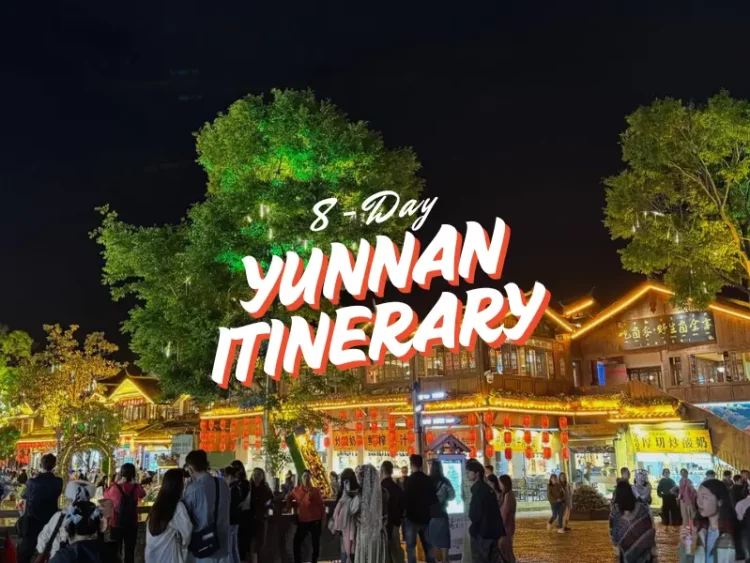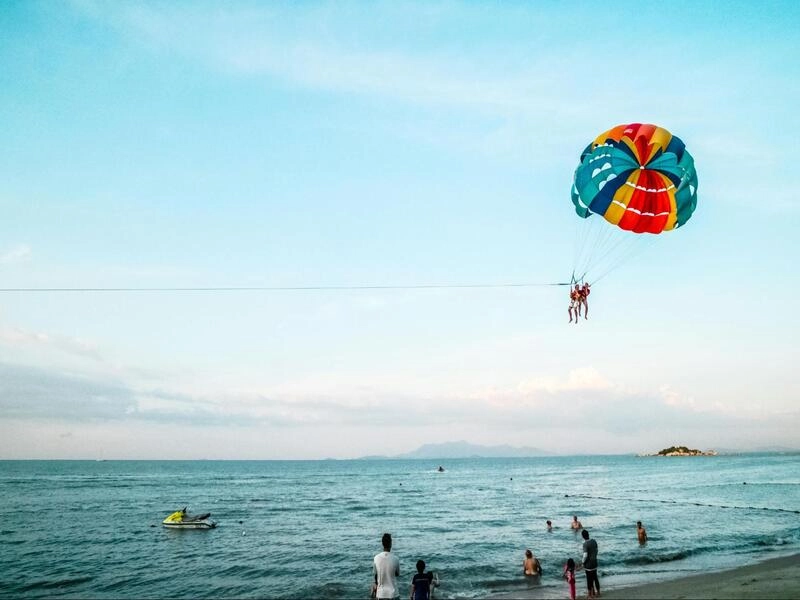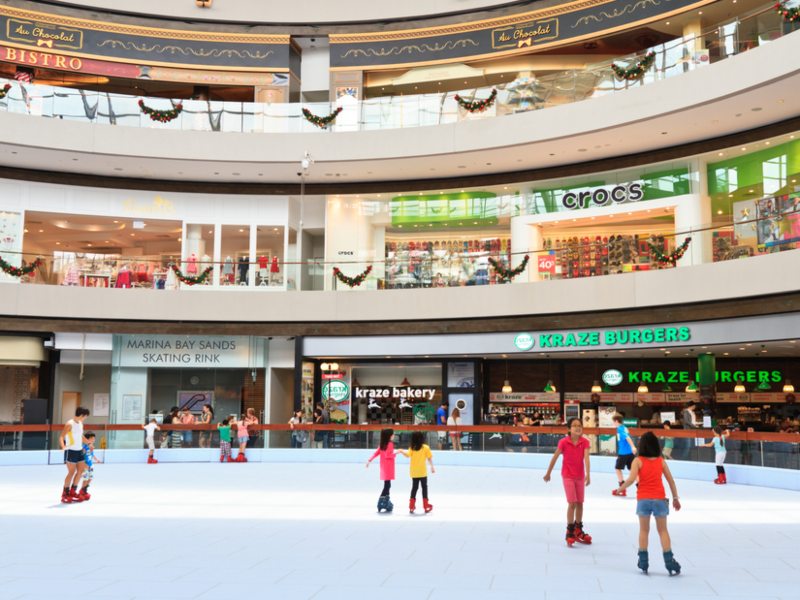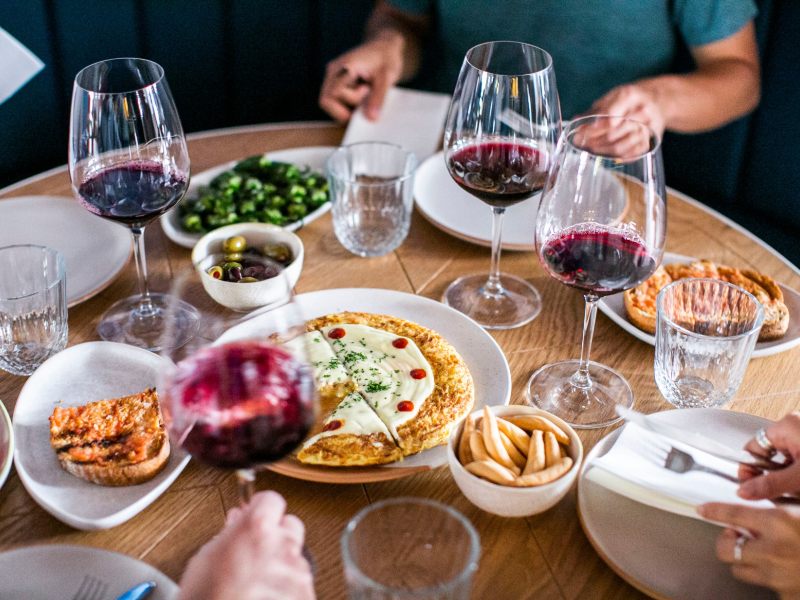Sawadee… no wait, wrong trip! If you think China travel is all about buzzing metropolises, Yunnan will be a breath of fresh alpine air. This province in Southwest China serves up snow-capped peaks, ancient towns, and rainbow fields of flowers – basically a dream backdrop for any curious traveller. We’ve crafted an 8-day Yunnan itinerary that hits the highlights for first-timers, taking you through the “Golden Route” of Kunming, Dali, Lijiang, and Shangri-La.
Best time to visit Yunnan
Before you grab your backpack, a quick PSA: The best times to visit Yunnan are from March to May and September to November. Spring brings blooming wildflowers, mild temperatures, and crystal-clear skies. Autumn, on the other hand, offers equally pleasant weather, with golden foliage, fewer tourists, and a crisp breeze that makes yak hotpot taste extra comforting.
Avoid July and August unless you enjoy testing the limits of your raincoat – it’s the monsoon season, after all.
How to get to & around Yunnan?
The easiest way to get to Yunnan is via Kunming Changshui International Airport, with direct flights from Singapore taking around four hours.
From Kunming, you can glide effortlessly between cities using China’s high-speed rail network.
- Kunming to Dali: ~2 hours
- Tickets cost around RMB145 (SGD28) and can be booked on the 12306 China Railway app (which thankfully has an English version)
Getting around Dali, Lijiang & Shangri-La
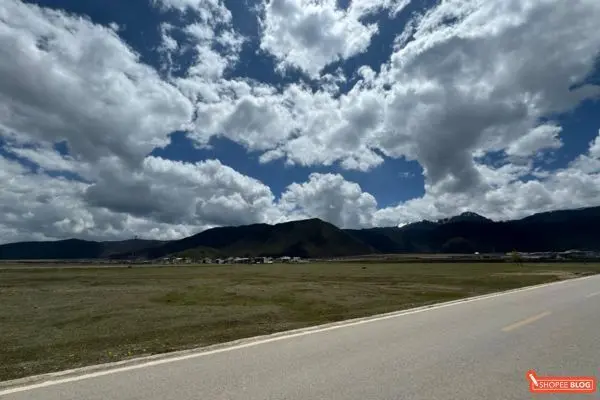
This stretch of the journey is where the real magic happens, and trust us – having a private driver is the secret sauce. You’ll get scenic roadside stops, flexible departure times, and someone who knows the best toilets between towns. The drive from Dali to Lijiang takes around 2.5 hours, while Lijiang to Shangri-La is roughly 3 hours.
Drivers can be booked via Xiaohongshu, where you’ll find reviews, sample routes, and even photos of their cars. Expect to pay around RMB1,000 (~SGD180) per person for a week’s journey, with plenty of scenic and snack stops along the way.
Where to stay in Yunnan
Yunnan spoils you with unique stays – think lakeside B&Bs and mountain lodges with views so good you’ll want to live there. For more options, China apps like Ctrip (携程) are great for finding local stays. Here are a few cool accommodations to consider:
-
Kunming
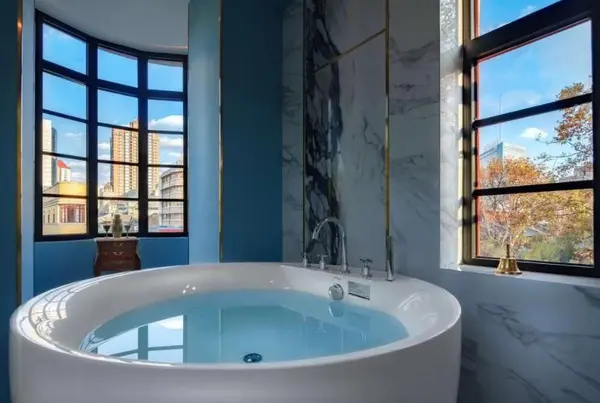
For travellers who prefer a stylish and comfortable stay, the Moon and Chalice Boutique Hotel is a fantastic choice. It is centrally located near Green Lake and features elegantly decorated rooms inspired by local heritage. The cost per night here ranges from approximately RMB 400 to 600, which is about SGD 80 – 120.
For those seeking a quieter, more intimate atmosphere, Lost Garden Guesthouse is a charming hideaway tucked away in a peaceful alley. It boasts a cosy on-site café and offers a restful environment before an early train or flight. Prices typically range from RMB 150 to 250 per night (around SGD 30 to 50).
-
Dali
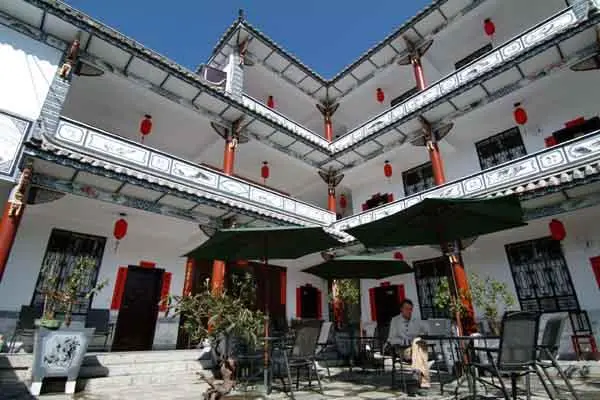
In Dali, you will have to decide whether you want to stay in the lively Ancient Town or enjoy the tranquillity of Erhai Lake. Backpackers and solo travellers often favour the Jade Emu International Guesthouse, which is clean, social, and conveniently located near the Old Town. Rates here are quite affordable – about RMB 100 – 180 per night (roughly SGD 20 – 36).
For a more romantic and boutique experience, Dali Mu Yun Bie Yuan near Erhai Lake blends modern aesthetics with traditional Bai architecture. This guesthouse features stunning views from its rooftop terrace, with nightly rates between RMB 400 and 700 (about SGD 80 – 140).
If you want to immerse yourself more deeply in local culture, consider staying at one of the family-run inns in the villages of Xizhou or Shuanglang. These inns provide an authentic Bai experience, and you might even get to participate in a traditional Three-Course Tea ceremony with your hosts. Prices usually range from RMB 150 to 300 per night (SGD 30 to 60).
-
Lijiang
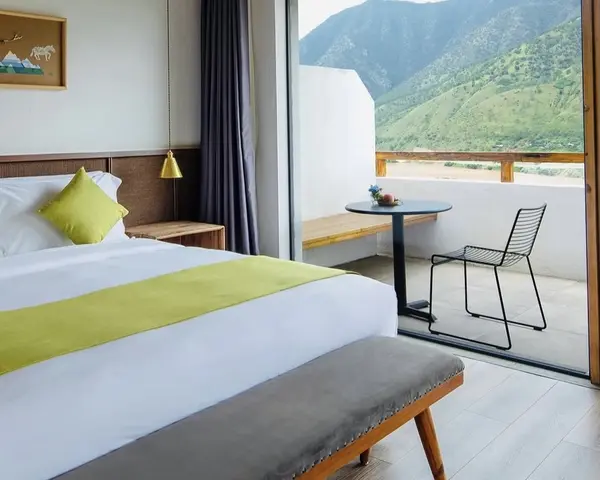
For travellers seeking more comfort and a touch of luxury, LUX Tea Horse Road Lijiang in Shuhe is an excellent choice. This boutique hotel provides spacious rooms, curated cultural experiences, and impeccable service. The nightly rate here ranges from RMB 600 to 1000 (approximately SGD 120 to 200).
-
Shangri-La

If you prefer a more central and wallet-friendly option, Timeless Inn Dukezong in Dukezong Ancient Town is ideal. It features warm wooden interiors, a peaceful courtyard, and a great location within walking distance to the Golden Prayer Wheel. Many family-run guesthouses here include breakfast, tea, and stories about local life. The cost per night is around RMB 200 – 350 (SGD 40 – 70).
Day 1: Kunming (昆明) – Stroll the “Spring City”
Start slow at Green Lake Park (翠湖公园)
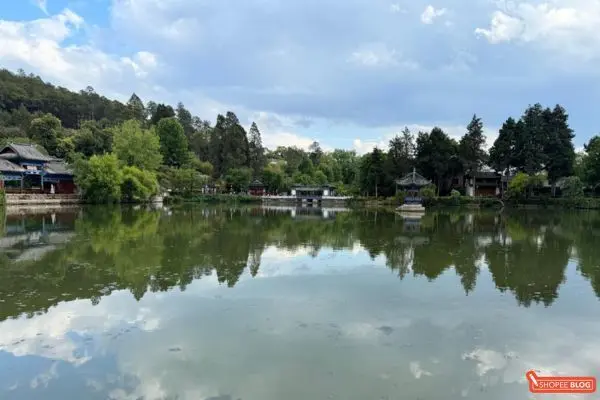
Arrive in Kunming, and shake off the jet lag with a leisurely city tour. Start at Green Lake Park, a serene oasis in the city centre. Time seems to slow down here, with resplendent pavilions watching over a mirror-like lake and lush greenery all around. If you’re here in winter, you might spot flocks of migratory black-headed gulls dancing above the water. On Sundays, the park comes alive with locals in traditional costumes singing and dancing!
Explore the Flower and Bird Market
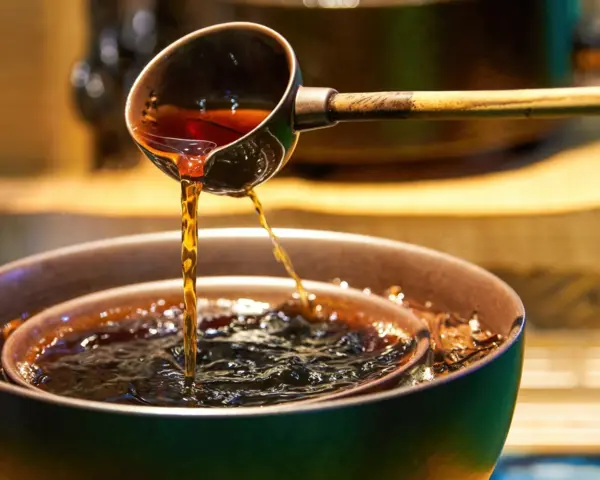
Next, dive into Kunming’s local culture at the Flower and Bird Market in the downtown area. It’s a bustling maze of stalls selling everything from exotic plants and songbirds to handicrafts and street snacks. Grab a cup of pu-erh tea and wander among the colourful trinkets.
Optional detour: Yuantong Temple (圆通寺)
If time and energy allow, make a short visit to Yuantong Temple, one of Kunming’s oldest and most beautiful temples (over 1,200 years old). Nestled at the foot of Yuantong Hill, this serene and atmospheric complex offers a rare blend of Tang Dynasty architecture, tranquil lotus-filled ponds, and graceful walkways shaded by ancient trees. The temple is an active place of worship, so you’ll likely see monks and devotees engaged in prayer, incense rituals, and quiet reflection. Its central pavilion, surrounded by water on all sides, provides a peaceful spot to sit and soak in the spiritual ambience
Dinner like a local: Crossing the Bridge Rice Noodles (过桥米线)
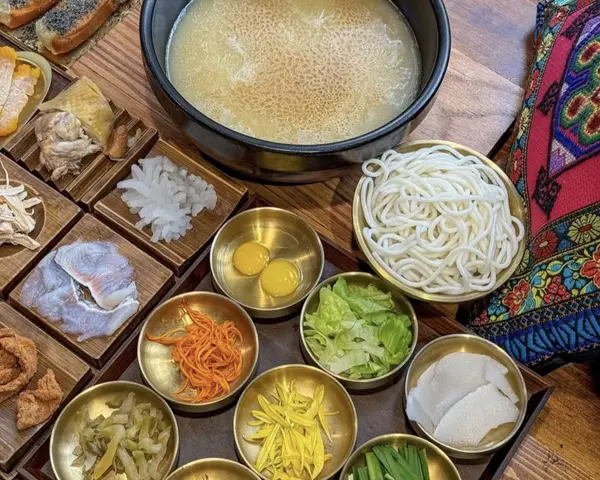
Day 2: Kunming – Stone Forest Day Trip & Journey to Dali
Morning adventure: Explore the Stone Forest (石林)
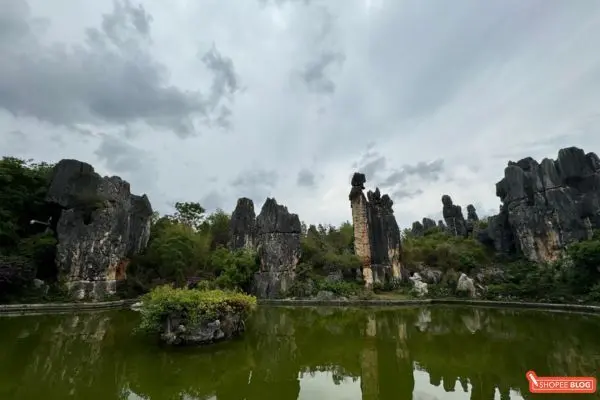
Roughly 90km east of Kunming, the Stone Forest Scenic Area is a surreal, UNESCO-listed landscape unlike anything else in China. Once you arrive, you’ll find a maze of limestone pillars erupting from the ground like a petrified forest — earning it the nickname “First Wonder of the World.” The site is laced with paths dating back to the Ming Dynasty, winding between formations with quirky names like:
- Sword Peak Pond
- Ashima Rock – a local legend says this stone formation is the fossilised figure of a Yi maiden turned to stone for love.
Give yourself 2 – 3 hours to wander, take photos, and soak up the mysterious atmosphere. If you’re not up for hiking the full area, electric shuttle buses are available to reach key viewpoints easily.
Optional side trip: Jiuxiang Caves (九乡)
Got extra energy and a love for caves? The Jiuxiang Scenic Area is just 40 minutes from Shilin and features:
- Majestic stalactites and stalagmites
- An underground waterfall
- The stunning “Fairy Palace” chamber
Not essential, but a great bonus if you’re feeling adventurous.
Afternoon return: Local flavours before departure
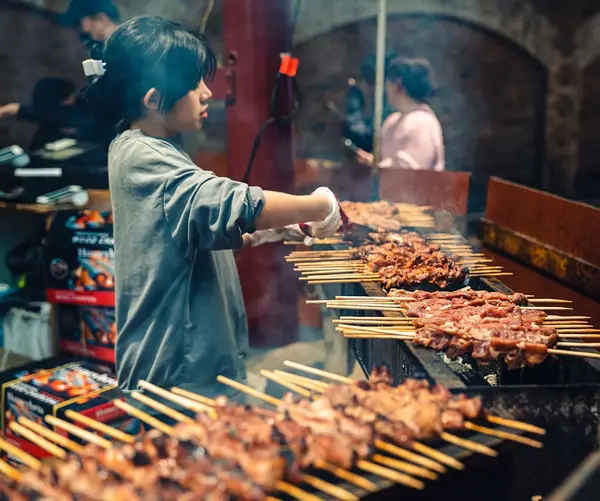
Head back to Kunming in the late afternoon. You’ve likely worked up an appetite — why not reward yourself with some local specialities? Our recommendations are:
- Grilled rubing (乳饼): a savoury local goat cheese grilled to perfection.
- Yunnan BBQ skewers: smoky, spicy, and perfect with the cool evening breeze.
Evening ride: High-speed train to Dali (大理)

After dinner, it’s time to continue your journey. Hop on a high-speed train to Dali, which takes around 2 hours. Most trains depart between 5pm – 8pm, so plan ahead to catch one that fits your pace. By the time you arrive in Dali, the stars will be out — and so begins the next chapter in your Yunnan adventure.
Day 3: Dali – Ancient Town Charms & Bai Culture
Morning: Discover Dali Old Town (大理古城)
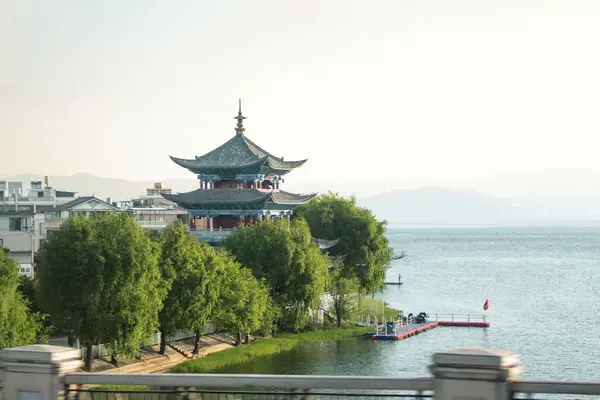
Start your day wandering through Dali Ancient Town, a pedestrian-friendly mix of history and hipness. Enter through the South Gate, and stroll stone-paved streets lined with Bai-style architecture, temples, wooden shopfronts, and quirky cafes.
- Snap pics at the Wuhua Tower and seek out the hidden Catholic church tucked in an alley.
- Expect a mix of traditional charm and modern touches (yes, even trendy bubble tea shops not yet in Singapore!).
- Set aside 3 – 4 hours to explore the old town loop and soak up the vibrant yet relaxed vibe.
Late morning: Visit the Three Pagodas of Chongsheng Temple
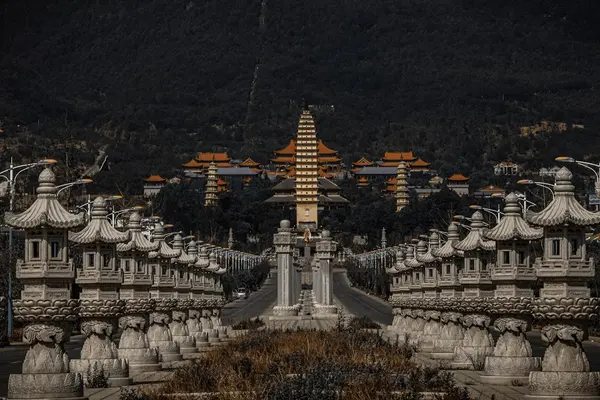
Just outside the old town, the Three Pagodas are Dali’s postcard stars. Dating back over 1,000 years, they’ve stood strong through multiple earthquakes.
- Qianxun Pagoda, the tallest, is flanked by two smaller pagodas in a triangle formation.
- Behind them lies the Chongsheng Temple complex, a peaceful monastery with incense halls and sweeping mountain views.
- Visit in the late afternoon for the best light — the golden glow against the snow-capped peaks is stunning.
Cost: Entry is around RMB75 (SGD14), including the temple and museum.
Afternoon: Dive into Bai culture in Xizhou Ancient Town (喜洲古镇)
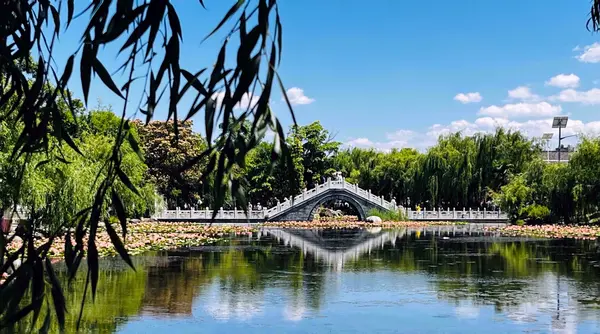
About 20 minutes north of Dali, Xizhou offers a deeper look at Bai minority culture. Once a prosperous trading town, it’s now a peaceful blend of rustic charm and artistic flair.
- Admire Bai mansions with courtyards, decorative rooftops, and colourful murals.
- Snap a photo at the famous tiled wall, which perfectly frames Cangshan Mountain in the background.
- Try Xizhou baba — a crispy local flatbread (sweet or savoury), perfect with a cup of Yunnan coffee.
Optional cultural experience:
- Join a Three-Course Tea ceremony, a traditional Bai ritual symbolising the stages of life — from bitter to sweet to complex. An acquired taste, but worth a try.
Cost: Entry to Xizhou is free, though some private homes charge a small fee (~RMB20). You can reach Xizhou by tuk-tuk or a hired driver.
Evening: Wind down with music & Dali beer
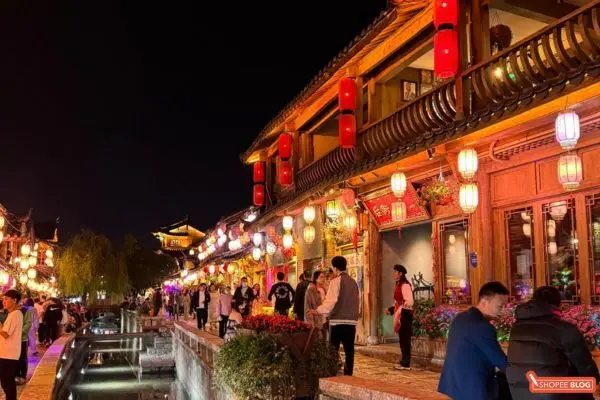
Return to Dali Old Town for a lively evening. As night falls, the streets glow with red lanterns, and the sound of live music fills Foreigner Street (Huguo Road).
- Grab a home-brewed pint at Bad Monkey Bar, a popular expat-founded pub known for its relaxed vibe and live bands.
- Toast to a day of history, culture, and culinary delights — cheers (or as the locals say, ganbei)!
Day 4: Dali – Erhai Lake Sunrise & Journey to Lijiang
Sunrise by the water: Erhai Lake (洱海)
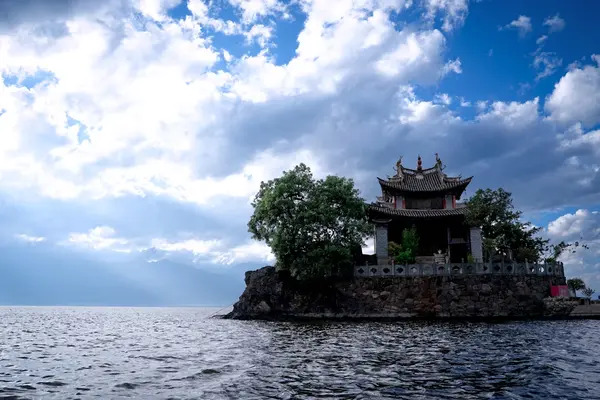
Wake early for one of Dali’s most magical moments: sunrise over Erhai Lake. Head to Shiling Village on the lake’s eastern shore — one of the best spots to catch the golden glow.
- Around 7am, the sun peeks over the mountains, turning the lake shades of pink and gold.
- You might see fishermen gliding by in wooden boats, casting nets in the quiet. It’s serene, meditative, and breathtaking.
Feeling active? Rent a bicycle and ride along the lakeside road. The crisp morning air, peaceful surroundings, and sights of locals laying out fresh marigold flowers add a poetic touch to your ride.
Midday stop: Shuanglang Ancient Town (双廊古镇)
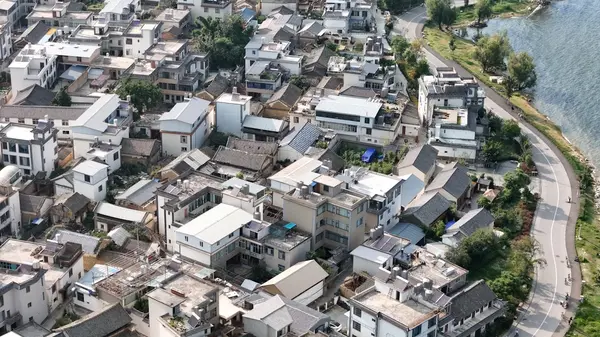
After your lakeside morning, say goodbye to Dali and begin the drive toward Lijiang. On the way, stop at Shuanglang, a quiet gem on Erhai’s northeast shore. Think of it as Dali’s laid-back cousin — peaceful, artistic, and incredibly photogenic.
- Stroll lanes lined with Bai-style homes, indie cafés, and lake-facing terraces.
- Enjoy a slow cup of Yunnan arabica coffee while gazing out at Jinsuo Island floating in the lake.
For a sweet splurge, visit the Sun Palace (太阳宫) café:
- A hilltop mansion-turned-dessert haven was once home to a famous dancer.
- Entry is RMB128 (~SGD23), which includes a curated dessert platter (matcha mountain cakes, petit fours, etc.) and access to stunning viewing terraces.
- It’s a treat for the tastebuds and the camera – you’ll feel like you stepped into a Chinese drama.
Afternoon drive: To Lijiang (丽江)
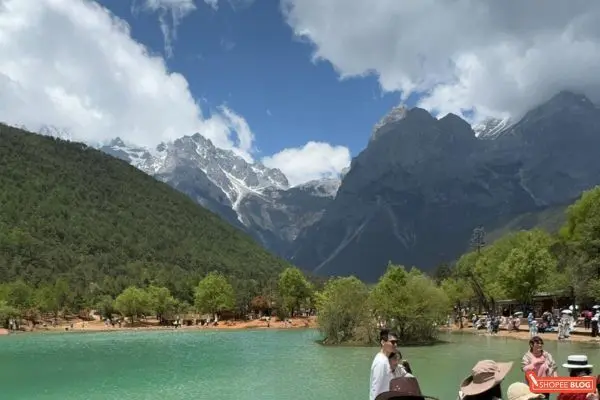
Continue your journey to Lijiang, a drive of about 2.5 hours from Shuanglang (or 1 hour 45 minutes by high-speed train from Dali). Along the way, you’ll climb to higher altitudes, so bring ginger candy or meds if you’re prone to motion sickness. Look for the Jade Dragon Snow Mountain on the horizon — it signals your arrival.
If you’re arriving by train, note that Lijiang Railway Station is about 20 minutes from Old Town by car — a quick DiDi ride will get you to your hotel.
Evening: Settle into Lijiang
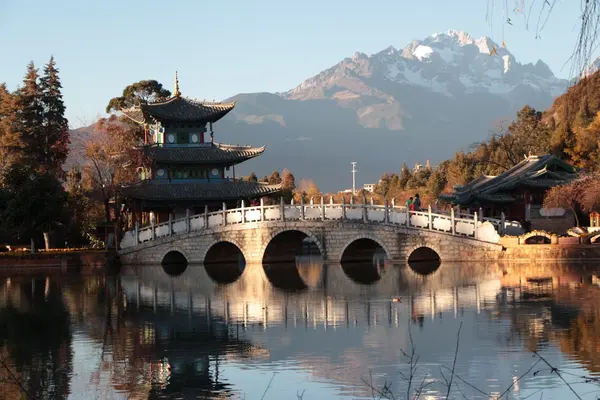
Once checked into your Lijiang accommodation, keep the evening relaxed. Explore a few cobbled lanes to get your bearings, but save your full Old Town tour for tomorrow.
Hungry? Try local Naxi cuisine, like:
- Matsutake chicken stew – a nourishing, aromatic dish with wild mushrooms.
- Yak meat skewers – a hearty mountain delicacy.
Rest up — tomorrow, you’ll be heading up the mountain, literally.
Day 5: Lijiang – Summit Jade Dragon Snow Mountain
Morning: Journey to Jade Dragon Snow Mountain (玉龙雪山)
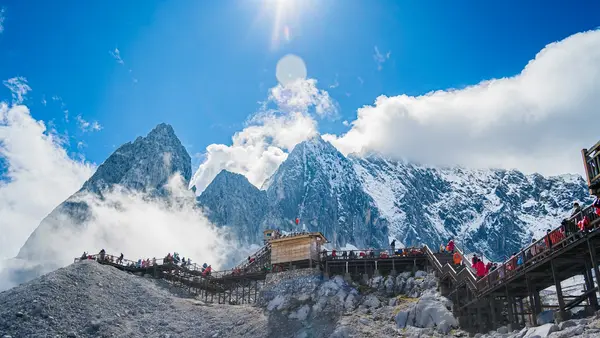
Start your day early and head to the Jade Dragon Snow Mountain Scenic Area, about 30 minutes from Lijiang Old Town by car or shuttle. Entry tickets are ~RMB100 (~SGD20), with a separate Glacier Park cable car ticket costing around RMB140 (~SGD25).
Tip: Book your tickets in advance via your hotel, a travel agent, or the official WeChat mini-program – they do sell out, especially in peak season.
Before heading up, make a quick stop at Ganhaizi (甘海子), a meadow at the mountain’s base. At sunrise, the light hits the peaks with golden and pink hues – a worthy rival to Erhai’s sunrise if you missed it.
Ride the Glacier Park Cable Car (to 4,500m!)
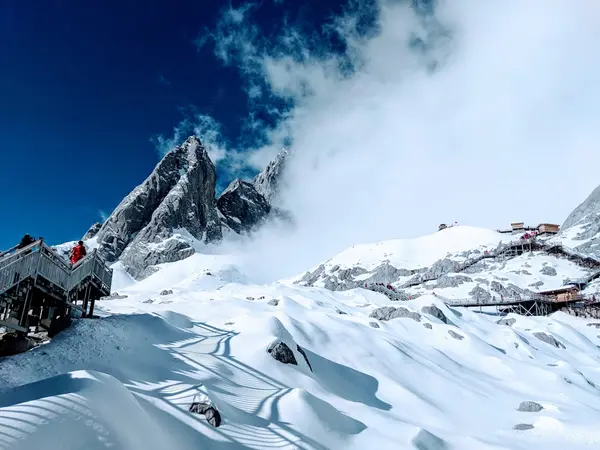
The cable car ride is short but thrilling, lifting you from pine forest to snow-covered wilderness in just 10 minutes. You’ll arrive at the Glacier Park station, which sits at 4,500m above sea level.
- Bring oxygen canisters (RMB20 each, available at the base) – many visitors experience mild altitude symptoms like dizziness or shortness of breath.
- Dress in layers – even if Lijiang is warm, it can be freezing at the summit. Gloves, a hat, and a windproof jacket are smart.
From the top station, ascend the wooden staircases slowly to the viewing platforms. The highest reaches 4,680m – the closest you’ll get to the summit. The views here are jaw-dropping: jagged, snow-draped peaks, clouds at eye level, and a cobalt-blue sky.
Midday: Visit Blue Moon Valley (蓝月谷)
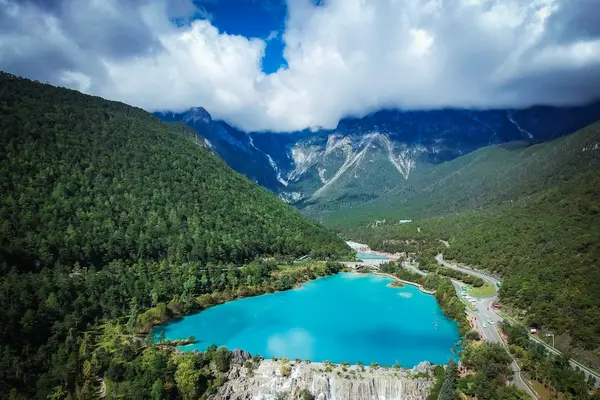
Once you’ve descended from the glaciers, head to Blue Moon Valley, located at the base of the mountain. Here, turquoise alpine lakes sparkle like liquid sapphires – the colours are so vivid, they feel unreal.
- Walk the boardwalks that trace the water’s edge.
- Look for reflections of the mountain in the pools – it’s a dream for photographers.
- You might see locals in ethnic dress posing by the water – a splash of culture amid the natural beauty.
Optional: Watch the Impression Lijiang Show (印象丽江)
If you booked ahead, catch the spectacular Impression Lijiang outdoor show, performed in a mountain amphitheatre. Directed by famed filmmaker Zhang Yimou, this hour-long performance stars:
- Hundreds of local Naxi, Yi, and Bai performers
- Traditional costumes, tribal music, galloping horses
- A real mountain backdrop that shifts with the weather
Tickets cost ~RMB280 (~SGD50), and shows are typically late morning. It’s a powerful, immersive way to experience Yunnan’s ethnic spirit.
Lunch & return to Lijiang Old Town
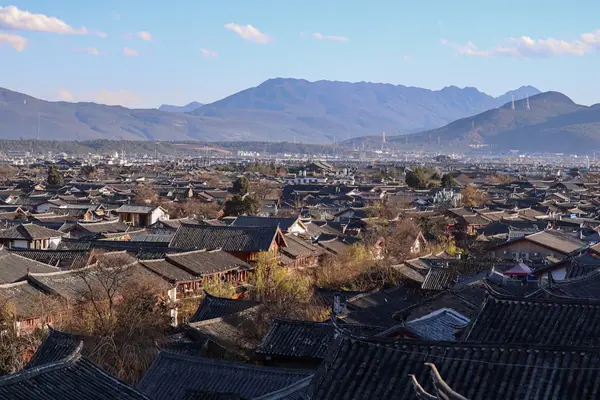
You can grab lunch at the park’s visitor centre — expect simple but satisfying fare like fried rice, noodles, or instant ramen (you’ll have an appetite after that climb!). By late afternoon, return to Lijiang Old Town to unwind. As the sun sets, red lanterns begin to glow and the cobbled streets take on a fairytale charm. Enjoy a slow wander along the canals and alleyways.
Dinner & dessert ideas
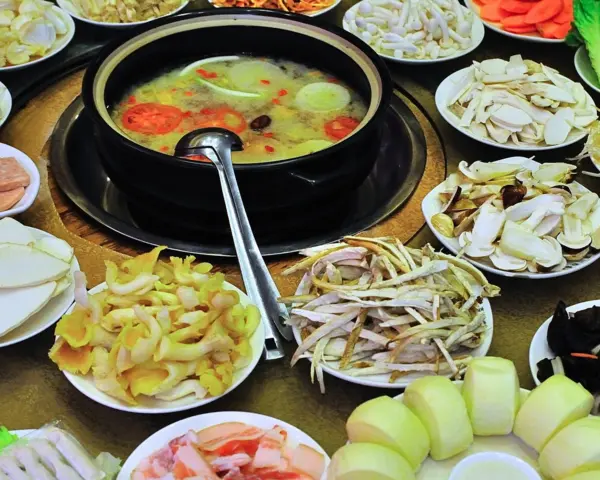
Grab dinner at one of the many courtyard restaurants – perhaps try Naxi grilled fish or yak hotpot to warm you up. And for dessert, snag a cup of freshly made rose petal ice cream from a street vendor (Lijiang is famous for its beautifully blooming roses, which flavour everything from cakes to teas).
Day 6: Lijiang – Palaces, Markets & Naxi Traditions
Morning: Exploring Lijiang Old Town (丽江古城)
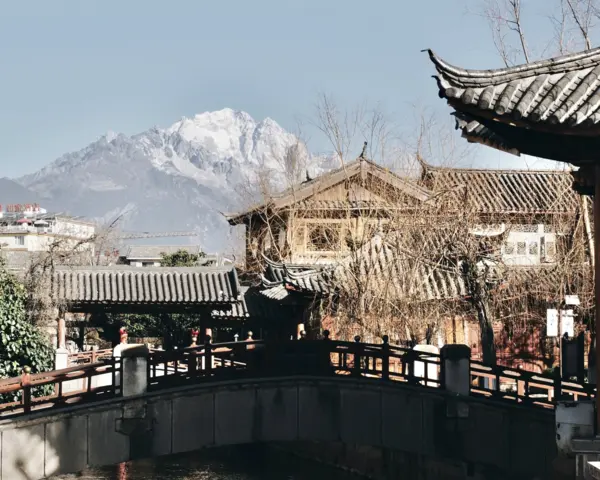
Begin your day wandering through the UNESCO-listed Lijiang Old Town, also called Dayan (大研). Once a bustling hub on the ancient Tea Horse Road, this town is a labyrinth of:
- Cobblestone alleys winding past timber Naxi homes
- Gurgling canals, arched stone bridges, and hanging red lanterns
- The iconic Giant Water Wheels at the entrance – a favourite photo stop
Make your way to Mufu Palace (木府), the grand former residence of Lijiang’s ruling Mu family. Restored to its Ming-era glory, the palace features:
- Intricately carved pavilions
- Courtyards with koi ponds and bonsai
- A scenic viewpoint from the top pavilion
Other gems in the Old Town include:
- Stone Bridge, often covered in love locks and seasonal flowers
- Streets festooned with oil-paper umbrellas, especially magical during golden hour
This is the day to max out your camera roll – every corner of the Old Town is photogenic.
Street food break: Snack like a local
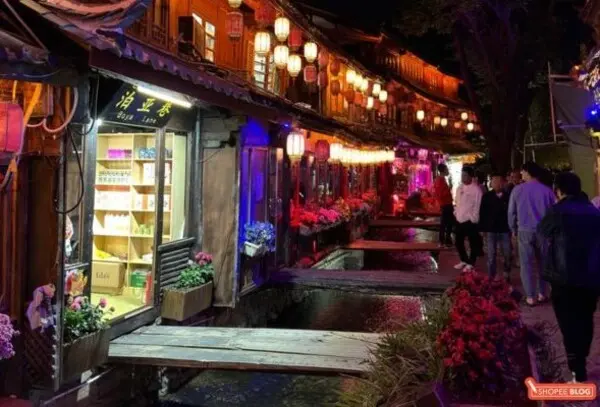
When you need a snack, Lijiang’s street food has you covered: try a piping hot baba (similar to the Xizhou one, often sold here too) or some grilled yak meat skewers dusted with chilli. If you’re adventurous, pick up a cup of suan lao nai – a local fermented yoghurt topped with honey or fruit; it’s a tangy treat that’s super popular in these parts.
Late morning: Black Dragon Pool (黑龙潭) & Dongba Culture
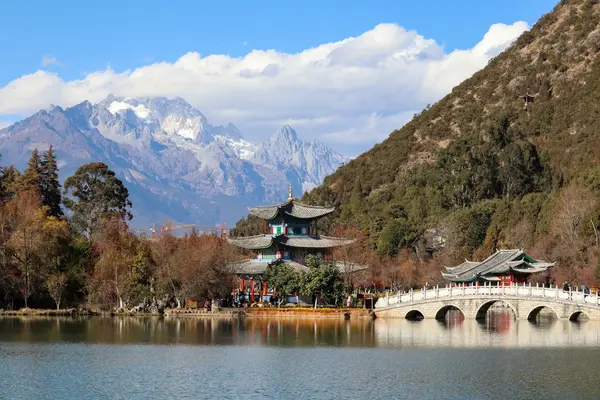
Just a 15-minute walk or short ride north lies Jade Spring Park, home to Black Dragon Pool. On a clear day, the still waters perfectly reflect Jade Dragon Snow Mountain, with a white marble bridge and pagoda in the foreground – an iconic Lijiang scene.
While there:
- Cross the arched bridge to the pagoda island
- Stroll past willow-lined paths and lotus ponds
- Drop by the Dongba Culture Museum, a small but interesting showcase of Naxi heritage and their unique pictographic script
Afternoon: Local life at Zhongyi Market (忠义市场)
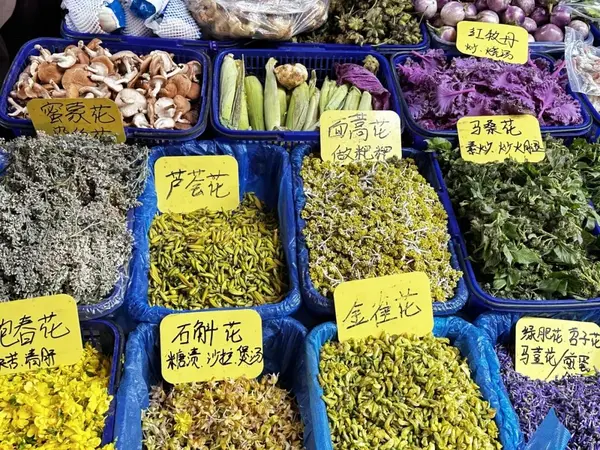
Head back into town and visit Zhongyi Market, one of the few places in Lijiang that remains untouched by tourism gloss. It’s where locals shop for:
- Fresh veggies and meat
- Handmade tofu, spices, and pickles
- Street-side buns and traditional teas
Keep an eye out for Naxi grandmothers in blue tunics and embroidered aprons, bargaining like pros. Feeling adventurous? Try a cup of yak butter tea – salty, creamy, and an acquired taste beloved in Yunnan and Tibet.
Optional side trip: Yuhu Village (玉湖村)
If you’ve got a few hours and want to escape the city, take a 30–40 minute drive to Yuhu Village at the foot of the mountain. This peaceful settlement was once home to famed botanist Joseph Rock, whose residence now operates as a small museum.
Highlights:
- Yuhu Lake (Jade Lake) – a tranquil, mirror-like body of water with snowy peaks in the background
- Horseback rides to Dragon Maiden Lake (RMB150) through wildflower meadows
- Rustic Naxi cuisine at family-run eateries like Fangma Huotang, where dishes are cooked over a fire pit
Here, life moves at a slower pace, perfect for soaking up one last slice of mountain serenity.
Evening: Final stroll through Old Town
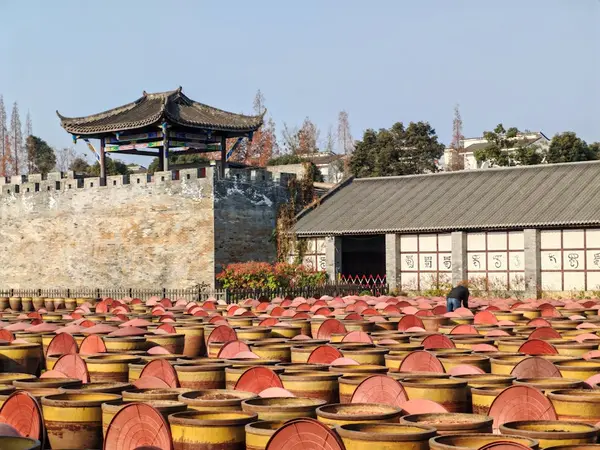
Come evening, Lijiang Old Town takes on a new vibe. Bars and cafes fill with soft music (no loud clubs here due to noise restrictions), and you might catch impromptu performances of Naxi traditional music in a local square. It’s your last night in Lijiang, so perhaps indulge in something sweet – the city has a few bakeries influenced by Western tastes due to the tourism scene, so you could find a decent slice of cake if you crave it.
Or stick to local – grab a bag of freshly roasted Yunnan chestnuts or fried cheese dumplings drizzled with rose jam, and savour them as you meander under the Old Town’s glowing red lanterns.
Day 7: Lijiang to Shangri-La – From Gorges to Tibetan Plateaus
Morning: Depart Lijiang & conquer Tiger Leaping Gorge (虎跳峡)
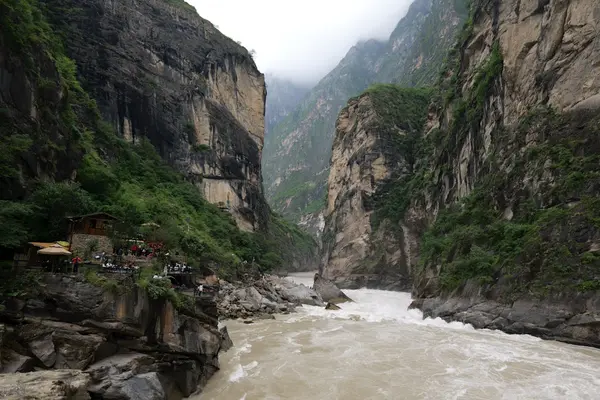
Leave Lijiang early for the drive to Shangri-La – about 3 hours by car. But don’t rush. A must-stop en route is the epic Tiger Leaping Gorge, one of the deepest gorges in the world and a highlight of any Yunnan trip.
- Entry fee: RMB15
- Time needed: 2 – 3 hours
- Tip: Wear sturdy shoes – there are steep stone steps and narrow ledges.
Follow the thunderous Jinsha River (Upper Yangtze) as it crashes through a narrow canyon wedged between Haba Snow Mountain and Jade Dragon Snow Mountain. Legend has it a tiger once leapt the gorge to escape a hunter – hence the name. Midway down, you’ll see the iconic Tiger Leaping Stone, where daredevil visitors love to pose for dramatic photos (yes, you can pay locals to Photoshop out the safety railings).
Want a shortcut backup? Try the RMB10 cliffside ladders set up by local villagers – thrilling, steep, and definitely not for acrophobes.
Afternoon: Scenic drive into Tibetan Shangri-La (香格里拉)

After your gorge adventure, continue north. As you climb, the landscape transforms: pine forests give way to yak-dotted grasslands, fluttering Tibetan prayer flags, and monasteries nestled on hillsides. Welcome to Shangri-La, perched at 3,200m above sea level.
Evening: Dukezong Ancient Town (独克宗古城) & the Golden Prayer Wheel
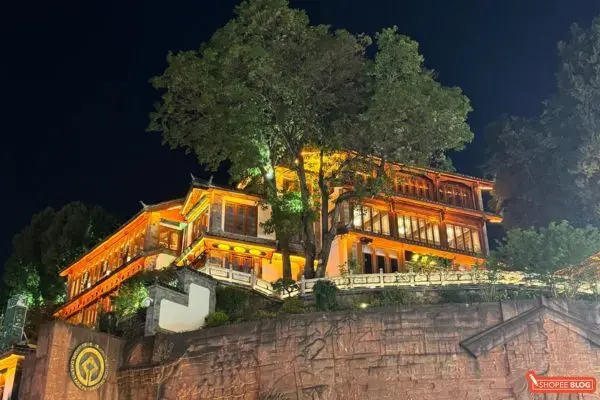
Wander into Dukezong Ancient Town, the spiritual heart of Shangri-La. Unlike the more Han-style old towns of Dali and Lijiang, Dukezong has a distinctly Tibetan character – white stone houses, colourful buntings, and spinning prayer wheels at every corner.
- Climb Turtle Hill to reach the world’s largest prayer wheel – over 20 meters tall.
- You’ll need a few people to help rotate it, but tradition says three full spins bring blessings.
- Stay for sunset – the rooftops below turn golden, and the views stretch to the snow-dusted peaks in the distance.
As night falls, the town square often comes alive with Tibetan circle dancing. Locals of all ages join in, and visitors are warmly welcomed.
Dinner: Yak Hotpot & barley wine by firelight
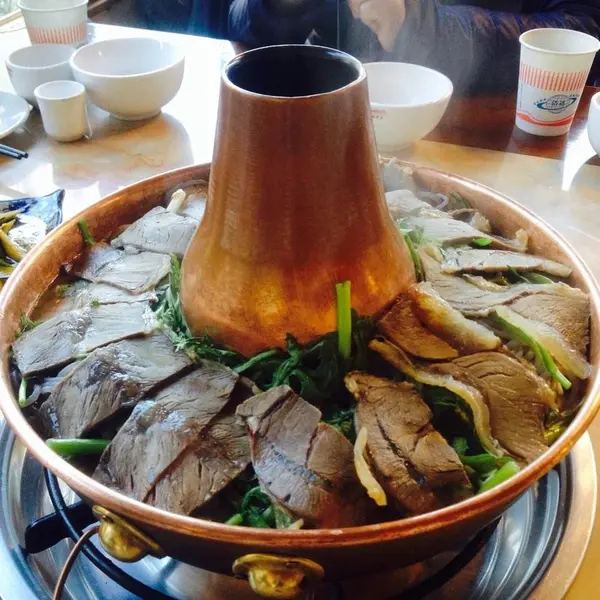
For dinner, savour some hearty Tibetan fare. Yak meat hotpot or tsampa (roasted barley flour porridge) will warm you right up. There’s also a local spirit called barley wine – proceed with caution, it’s strong stuff, especially at altitude! A great spot is any of the family-run Tibetan kitchens in the old town; look for ones with lots of locals slurping noodles or momos (Tibetan dumplings).
End the night star-gazing if the skies are clear – Shangri-La’s high altitude and lack of big-city lights mean the stars here shine extra bright, seemingly within arm’s reach.
Day 8: Shangri-La – Monasteries, Meadows & a Magical Farewell
Morning: Songzanlin Monastery (松赞林寺) – “Little Potala” Grandeur
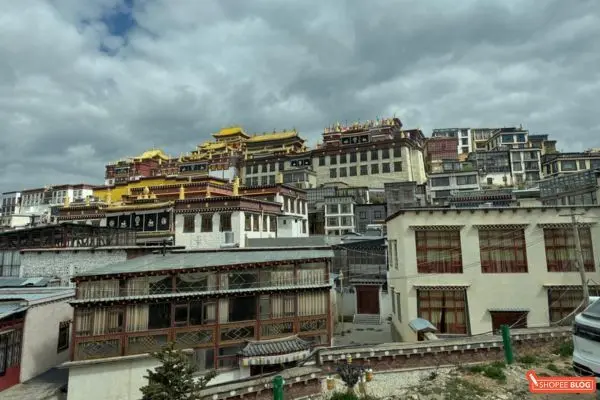
Begin with a visit to the majestic Songzanlin Monastery – the spiritual crown jewel of Yunnan’s Tibetan plateau.
- Getting there: 15-minute drive from Dukezong Old Town
- Entry: RMB90 (includes shuttle bus from ticket centre)
Climb the stone steps and feel the spiritual energy intensify. As you ascend, hear the soft chanting of monks and the flutter of prayer flags in the wind. Inside, explore:
- Towering Buddha statues
- Intricate Tibetan murals
- Butter lamps glowing quietly in dim prayer halls
If you’re lucky, join a free tour led by a young monk – a moving, insightful glimpse into monastic life and belief. From the top balcony, soak in the sweeping view of the golden rooftops, still mountain air, and peaceful lake below.
Late morning – afternoon: Napahai Lake (纳帕海)
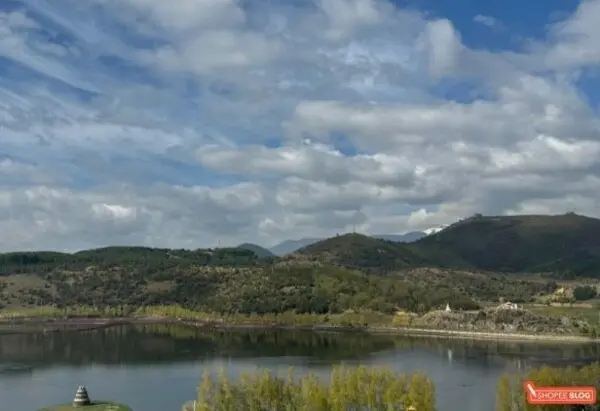
Next, head out to the dreamy Napahai Lake – a vast grassland ringed by snow-capped peaks and grazing yaks.
- Distance: ~20km from Shangri-La town
- Spring: Lake fills with shimmering water, attracting migratory birds
- Summer – Autumn: Lush meadows dotted with yaks, wildflowers, and ponies
This is your chance to walk, ride, or pose your way into your final memories of Yunnan.
Optional Highlight: Tibetan Costume Photoshoot
- Rental: From RMB88 (~SGD$160)
- Pro shoot package: ~RMB300–400 (includes makeup, transport to scenic spots, and edited shots)
- Backdrops: Golden plains, blue skies, distant mountains – it’s your highland fantasy brought to life.
Alternatively, simply enjoy a horseback ride led by local Tibetan villagers. A gentle trot across open meadows in mountain air? It doesn’t get more peaceful than this.
Late afternoon: Heritage Thangka painting experience
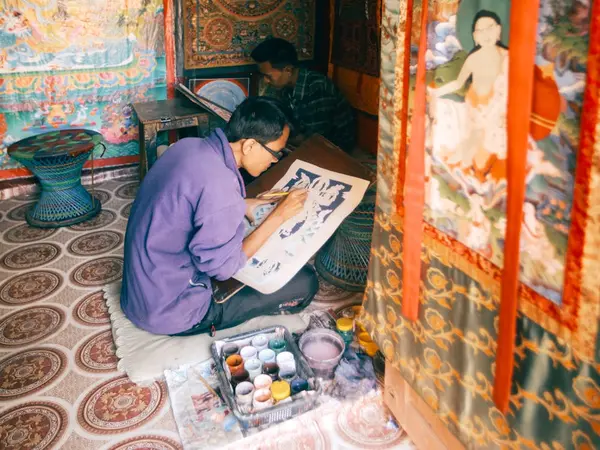
Return to Dukezong Ancient Town and stop by the Heritage Thangka Painting Experience Centre, tucked among whitewashed alleys.
What to expect:
- A short intro to Thangka art – Tibetan religious scroll paintings
- Hands-on painting: colour a pre-drawn piece as a personal souvenir
- Learn the symbolism of the deities and mandalas you’re painting
Cost: Free to join, ~RMB10 (~SGD2) if you want to seal and take it home
Evening: Final moments in Shangri-La
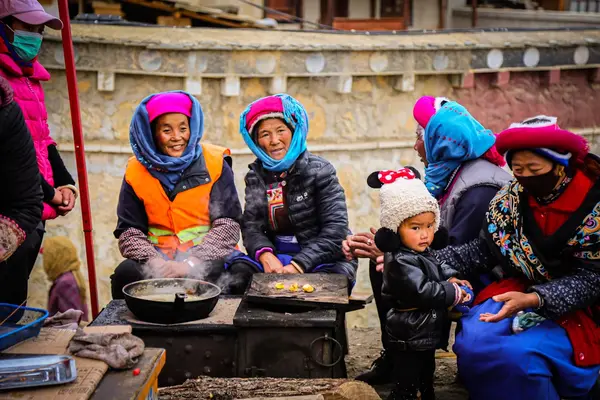
As the day winds down, take one last stroll through Dukezong Ancient Town. Climb up to the hilltop Guishan Park one more time for a final panoramic view of Shangri-La. Breathe in that cool, clean air and feel the serenity that earned this place its utopian name. You’ve traversed a lot of Yunnan in 8 days – from the spring blossoms of Kunming to Dali’s lakeside, Lijiang’s mountain majesty and Shangri-La’s Tibetan highlands. Yunnan travel truly offers a bit of everything.
Now, it’s time to head out. Shangri-La has a small airport (Diqing Airport) with flights to Kunming, Chengdu, etc., so you can catch an evening flight if available, or take a scenic drive back towards Lijiang/Kunming if your journey continues.
Yunnan itinerary complete: 8 days that changed the way you travel
From ancient towns straight out of storybooks to peaks that kiss the clouds, Yunnan has shown us a China beyond the skyscrapers – one brimming with culture, natural beauty, and warm smiles. This 8-day Yunnan itinerary is a whirlwind sampler of the province’s highlights, but there’s still so much more to explore when you visit Yunnan again.
For more travel inspiration in the Middle Kingdom, check out our other guides like Things To Do In Shanghai or Things To Do In Fuzhou. Till then, happy travels and zài huí (come again)!

